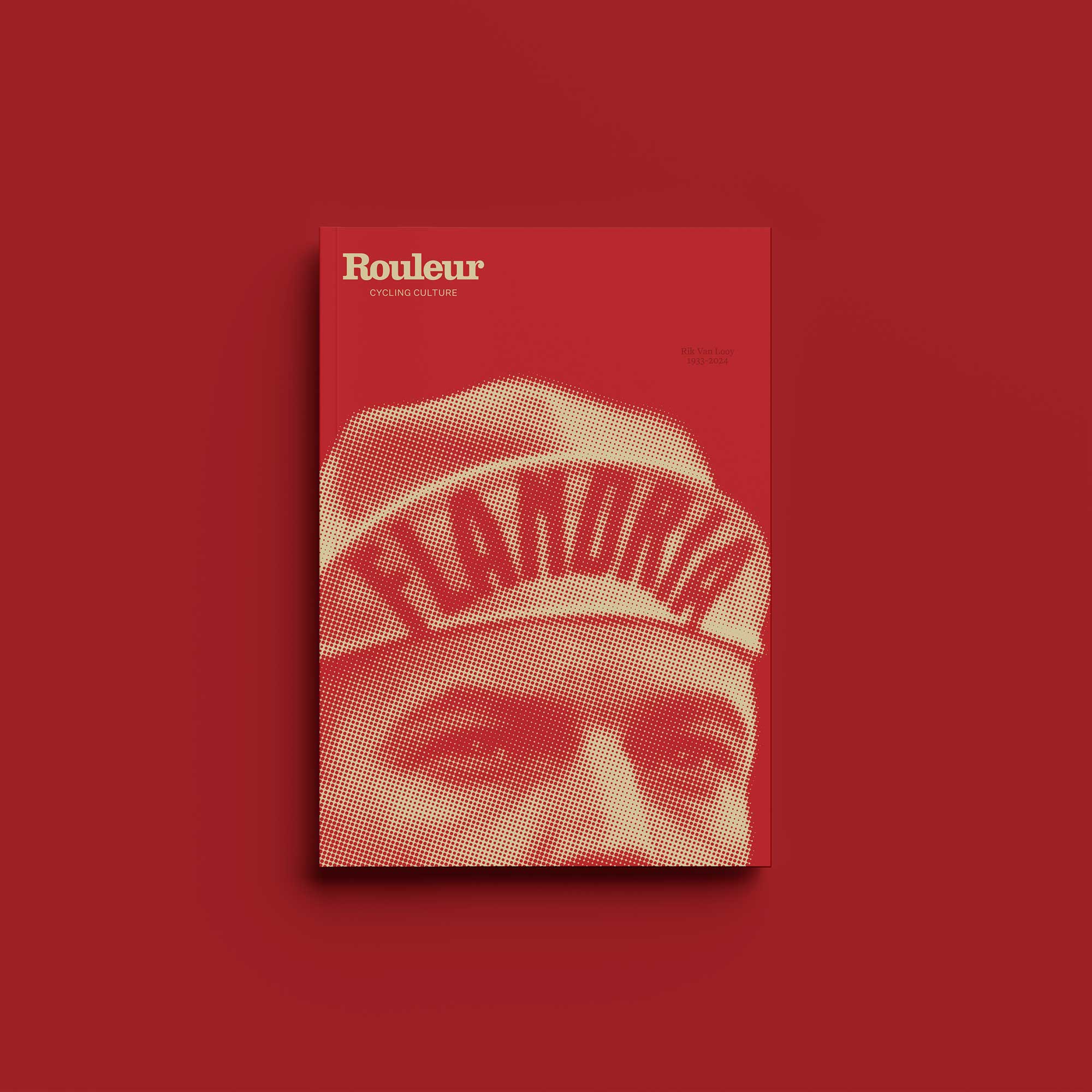It started with some pencil portraits of Tour de France winners, just to get himself back into the swing of working with physical media again after years of digital work. A few meetings later, Nick Higgins had a book commission.
And then as his fascination and focus of his project veered towards the mechanical detail of bikes, he found himself in need of developing new techniques.
“Previous to making the work for this book I was a very primitive and gestural painter,” says the south London based cyclist and illustrator. “Caring a lot about the detail of the bikes, I had to learn to do things accurately.”
So for this collection of images that charts the development of aerodynamic wheel technology: “this meant devising a way of painting circles using a potter’s turntable, or sometimes putting a paintbrush into a compass,” he says.
He adds: “For the spokes I was cutting paintbrushes down to just a few hairs” – all pleasingly lo-fi but innovative solutions to illustrate the cutting-edge evolution of an age-old device.
Nick Higgins’ book, Racing Bicycles – the illustrated story of road cycling is published by Laurence King on June 18.
 “The first wheel anyone raced on: an iron hoop, radial spokes, solid rubber tyre. Plenty of room for improvement here.”
“The first wheel anyone raced on: an iron hoop, radial spokes, solid rubber tyre. Plenty of room for improvement here.”
 “The brilliant James Starley, having rescued the world from the grotesque penny farthing when he designed the safety bicycle, went on to devise tangential lacing in 1874. This reconfiguration of the spokes gave effective transmission of torque from the drive at the hub to the rim on the road. Stronger, more efficient, and lighter now that the rim was wooden, it was also fitted with Dunlop’s pneumatic tire and was essentially the model for wheels for the next 40 years.”
“The brilliant James Starley, having rescued the world from the grotesque penny farthing when he designed the safety bicycle, went on to devise tangential lacing in 1874. This reconfiguration of the spokes gave effective transmission of torque from the drive at the hub to the rim on the road. Stronger, more efficient, and lighter now that the rim was wooden, it was also fitted with Dunlop’s pneumatic tire and was essentially the model for wheels for the next 40 years.”
 “In 1931 Anton Magne raced an alloy rim, known as Duralumin, stealthily disguised with a wood effect paint finish. Lighter, stronger and less susceptible to changes in the weather than the unstable wooden wheels. Alloy would persist until carbon replaced almost every other material in the 2000s.”
“In 1931 Anton Magne raced an alloy rim, known as Duralumin, stealthily disguised with a wood effect paint finish. Lighter, stronger and less susceptible to changes in the weather than the unstable wooden wheels. Alloy would persist until carbon replaced almost every other material in the 2000s.”
Desire: Legor Porecca – Italian style from Barcelona
 “A 32 spoke wheel churns up a lot of air resistance. What can you do about that? Fill in the holes of course. A disc wheel, will however, become something of a liability in any appreciable crosswind. Not a problem on an indoor track though: this one coming from Miguel Indurain’s 1994 hour record bike.”
“A 32 spoke wheel churns up a lot of air resistance. What can you do about that? Fill in the holes of course. A disc wheel, will however, become something of a liability in any appreciable crosswind. Not a problem on an indoor track though: this one coming from Miguel Indurain’s 1994 hour record bike.”
 “Wheels are always a compromise between qualities. This perforated Campagnolo’s Scirocco from 1988 sought to find a balance between the aerodynamic virtues of a disc and the cross wind stability of more see-through wheels.”
“Wheels are always a compromise between qualities. This perforated Campagnolo’s Scirocco from 1988 sought to find a balance between the aerodynamic virtues of a disc and the cross wind stability of more see-through wheels.”

“With the development of carbon fibre technology, 30-odd metal spokes could be dismissed in favour just a handful of carbon blades. Although aerodynamic, light and strong, early carbon wheels could also be brittle and unpredictable with any failure catastrophic. This particular configuration, Spinergy’s 1991 Rev X, earned a reputation for shattering and a suspicion that its wide open spaces could cause horrific injury in a crash.”
Read: Chute! A brief history of crash photography
 “The three-spoked wheel of Graham Obree’s hour record bike, Old Faithful. The Specialized model might have been the only part of the legendary bike not built by hand in his shed”
“The three-spoked wheel of Graham Obree’s hour record bike, Old Faithful. The Specialized model might have been the only part of the legendary bike not built by hand in his shed”  “Having aero-optimised with a reluctant adoption of Obree’s unsightly ‘Superman’ postion, Chris Boardman used a Mavic five spoked carbon wheel for his hour record attempt in 1996. The UCI changed technical regulations shortly after that stymied the development of aerodynamic technology.”
“Having aero-optimised with a reluctant adoption of Obree’s unsightly ‘Superman’ postion, Chris Boardman used a Mavic five spoked carbon wheel for his hour record attempt in 1996. The UCI changed technical regulations shortly after that stymied the development of aerodynamic technology.”
 “Wheels with deep rims and conventional spokes are commonplace these days, with their versatility making them as suitable for road racing as against the clock. The optimum depth of the rim remains in the hands of the mechanical engineers.”
“Wheels with deep rims and conventional spokes are commonplace these days, with their versatility making them as suitable for road racing as against the clock. The optimum depth of the rim remains in the hands of the mechanical engineers.”

The post An illustrated history of aero wheels appeared first on The world's finest cycling magazine.






























